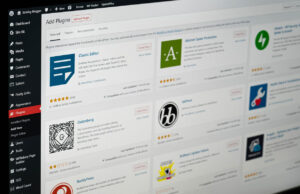How To Quickly Build Influence At A New Job

Congratulations. You got the job! Now the real challenge begins: hitting the ground running. I once interviewed a C-level leader from the retail industry about the importance of quickly getting the lay of the land when coming into a new role. “The first step I take when taking on a new assignment or project is what I call ‘surveying the landscape,’” she said. “I study my surroundings, and I try to understand the people and processes that drive value in that particular area.”
You see, if you spend the first few weeks of a new job focusing solely on your new job description, you’ll pass up opportunities that will set you up for long-term career success and growth, like understanding how your role can support other areas of the business and building alliances with influential counterparts. But by getting to know your new environment, you’ll be able to quickly pick up momentum and become known for driving value in the organization right from the get-go. Get started with these four tips.
1. Become the go-to person
Before you set out to meet anyone, develop a 30-second pitch that concisely explains your role and responsibilities, followed by three bullet points that describe why your new contacts should seek you out. You could say, for example, “I’m the new senior supply chain manager, responsible for supplier sourcing, strategic planning, and quality control. Come directly to me whenever you need help with pricing or supplier negotiations or if you have a question about the global commodities market.”
Share your commercial whenever you meet new colleagues to educate them about your new role, the value that you add and why they should come to you. By consistently introducing yourself this way, you can set yourself up as a credible authority and go-to expert in areas even beyond your job description. Then, people will realize they can come to for the bigger-picture, more strategic stuff.
2. Find an influential friend
Next, find someone who is well-connected and respected in your new group — like your new manager or the lead on a major project — and set up some time to chat. Let her know that you appreciate her knowledge and influence and that you would appreciate some advice as you begin your new role. Review the organizational chart with her and ask, “Who are the key people I should introduce myself to?” and “What questions should I ask them?”
From the answers you receive, create a checklist of names and create a plan to connect with each person in your first month on the job. Which brings us to:
3. Embark on a listening tour
Now, begin building a network of influence by connecting with every individual on your listduring a brief but purposeful “listening tour.” Your mission here is to have a purposeful and educational discussion that will lay the foundation for future collaboration by discussing your new co-workers’ roles, goals, challenges and ways you can help each other. In each meeting, listen for some key ways to be a resource to them in your first month on the job.
For example, when a new event manager I know learned that a colleague had just received an unexpectedly large catering bill, he asked to see the original contract, quickly identified some gray areas and re-negotiated with the vendor. Now that’s a memorable first impression.
4. Build an influential network
If the idea of finding one influential friend to help you “survey the landscape” proved helpful, now imagine the power of a network full of such individuals. During your listening tour, continue asking about other people in the company who have influence, make things happen and drive value, regardless of where they sit in the office hierarchy. In particular, gather intelligence on these categories:
- Informational powerhouses: These individuals keep a finger on the pulse of what’s going on in the organization and industry as a whole. By tapping into their knowledge of historical data and emerging trends, you’ll become empowered to make better business decisions more quickly.
- Influencers: These colleagues have an enhanced ability to lead change and make things happen. Pay attention to who holds influence regardless of their job title. Having an influencer or two in your corner will be invaluable when you need to launch a new initiative or get buy-in for an idea. Things move forward rapidly when an influencer is on board.
- Coalitions: Look for people who have formed groups that work together effectively and freely share information, resources, and opportunities. Ask yourself, “What is the social glue that binds this group together?” This will give you insight into working more effectively with those groups and within the organization as a whole.
By identifying these types of individuals, you’ll better know who to align yourself with — and how. As Sophie Vandebroek, chief technology officer with Xerox, once said, “It’s not enough to have a bright idea. I have seen too many projects led by great, passionate people fail because they tried to be a lone influencer. You have to get all the right people in the boat with you.” As your network grows, your ability to be an effective leader and influence will grow much stronger, too.
Don’t just spend your first month focused on mastering the tasks listed on your new job description. If you do, you’ll pass up valuable opportunities to understand how your role fits into the bigger picture. By taking time to build relationships, listen and get the lay of the land, you’ll gain momentum in your role and establish yourself as a key player in your new organization.













 © 2024
© 2024
0 comments